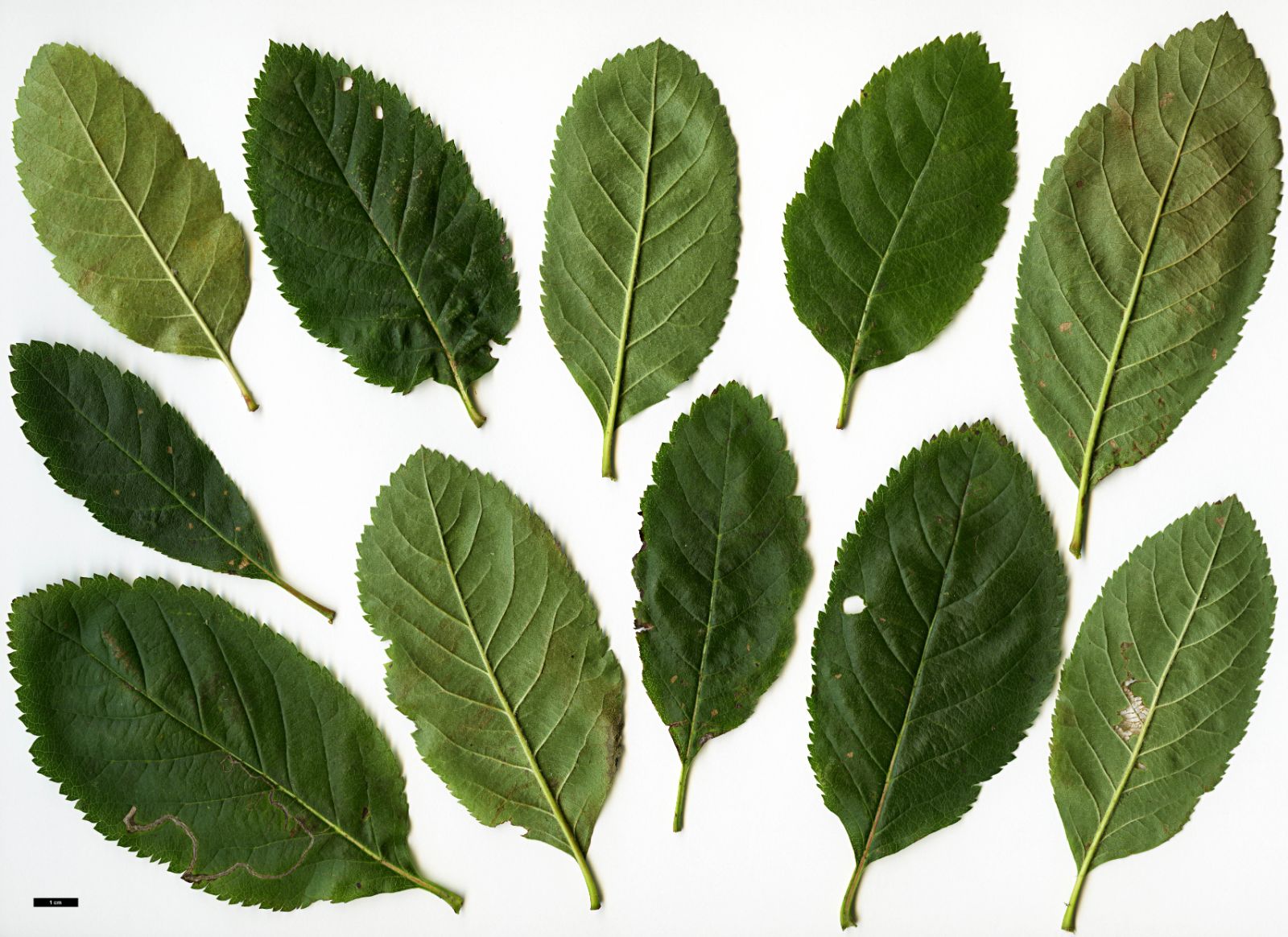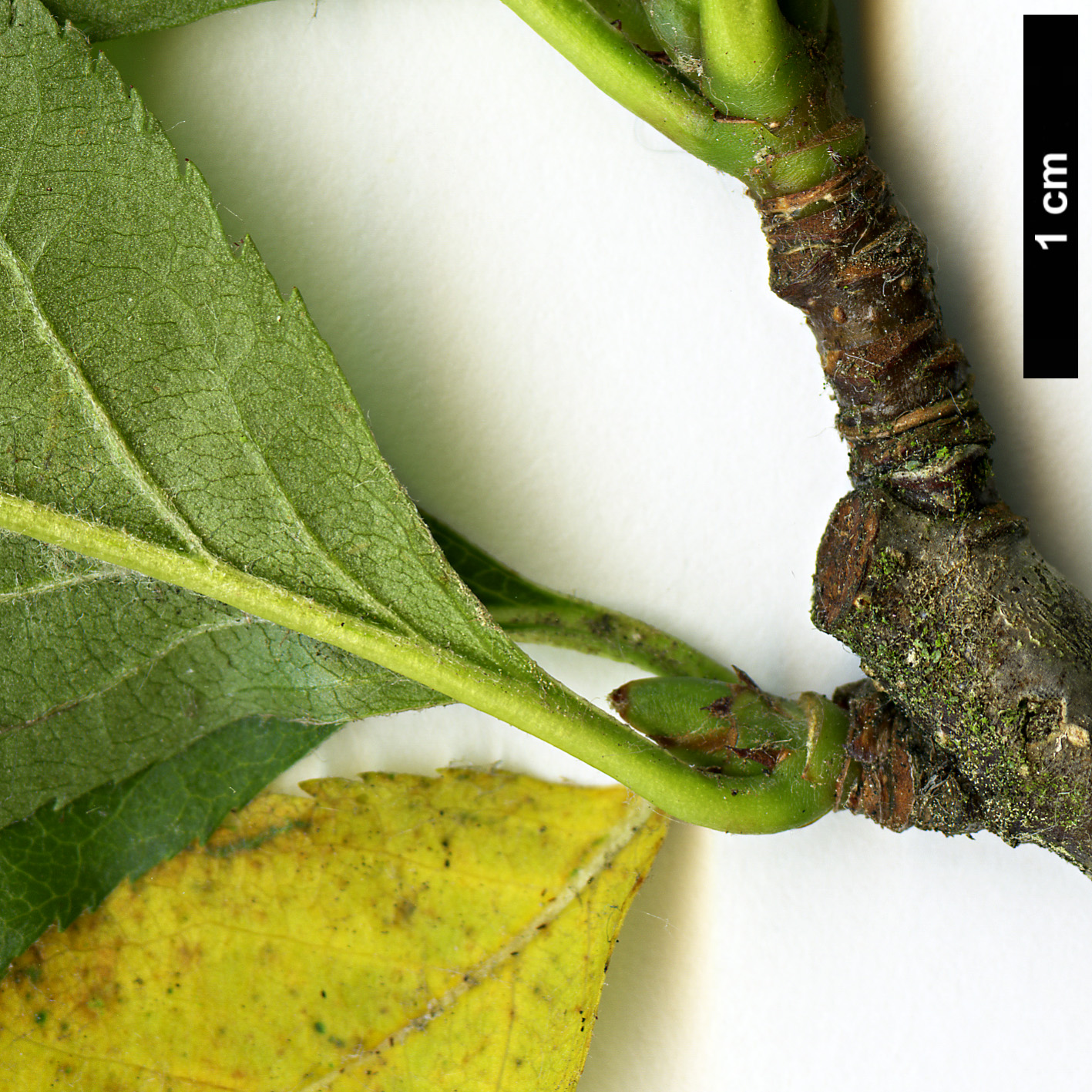Chamaemespilus alpina
Credits
Article from Bean's Trees and Shrubs Hardy in the British Isles
Recommended citation
'Chamaemespilus alpina' from the website Trees and Shrubs Online (treesandshrubsonline.
Genus
Synonyms
- Crataegus alpina Mill.
- Mespilus chamaemespilus L.
- Pyrus chamaemespilus (L.) Ehrh.
- Sorbus chamaemespilus (L.) Crantz
Other taxa in genus
Editorial Note
The text below is that of Bean (Bean 1981) who discussed this taxon under the name Sorbus chamaemespilus. We have created this hybrid article – Bean’s text under the correct modern name, with appropriate synonymy – whilst we await sponsorship to enable a full revision of this genus to be written. We are re-organising the Sorbus sensu lato articles in this way to enable a new revision of Sorbus sensu stricto to commence in 2023, and to bring the nomenclature of this complex group of plants up to date in line with modern treatments.
TC, August 2023.
A shrub of dwarf, compact habit, becoming eventually 5 or 6 ft high; branches short, stiff; young twigs covered at first with a whitish, cobweb-like substance. Leaves 11⁄4 to 3 in. long, 5⁄8 to 11⁄2 in. wide, ovate, oval or slightly obovate, green and glabrous on both surfaces, apex rounded or pointed, margins finely toothed; stalk 1⁄8 to 1⁄3 in. long. Flowers rosy, crowded in umbels which together form a small terminal corymb. Receptacle woolly at the base like the flower-stalk, the teeth pointed, erect, almost glabrous outside, but covered with a thick white wool inside; petals erect, never spreading. Fruits 1⁄3 to 1⁄2 in. long, scarcely so wide, scarlet-red.
Native of the mountains of central and southern Europe, to which it is endemic; in cultivation 1683. It is not frequent in gardens, but is very ornamental when in fruit and well worth growing as one of the few truly shrubby species, especially for planting in some sunny spot where a slow-growing shrub is desirable. It is distinct from the Aria group in its quite glabrous leaves and upright petals, and is now usually placed in a separate section of Sorbus, of which it is the sole member.
Although usually very dwarf in the wild, S. chamaemespilus is said to have attained a height of 12 ft in a garden in Perthshire.







